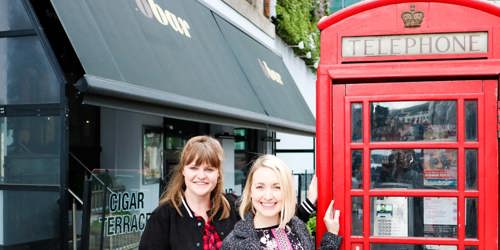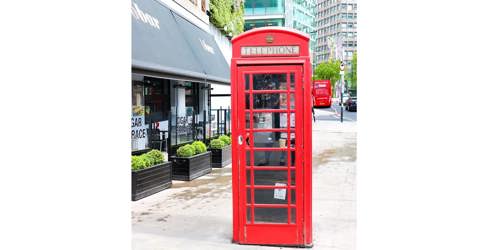
The history of the iconic London telephone box
London’s cultural icons don’t get much more quintessential than the red telephone box, one of the city’s signature landmarks.
23 Jul 2020
London’s cultural icons don’t get much more quintessential than the red telephone box, one of the city’s signature landmarks.
23 Jul 2020
London’s cultural icons don’t get much more quintessential than the red telephone box. Introduced to London in 1920, the bright booths have become one of the city’s signature landmarks. The telephone box outside Victoria’s bbar is a particular favourite with customers and tourists, who often stop to snap themselves by the kiosk.
But how did the red telephone box become such a recognisable part of the London landscape? The first ever public phone kiosk (known as the K1) was curiously made from concrete and arrived on London’s streets in 1920. Whilst the K1 has a red door, it looked more like a tiny hut than like the booths we have today, and the London Metropolitan Boroughs were reluctant to put them on the streets.

In order to find a booth that London would like, a competition was held in 1923. Its organisers invited three prestigious architects to showcase their designs along with ones from the Post Office and The Birmingham Civil Society. The winning entry came from Sir Giles Gilbert Scott, today known for Battersea Power Station and Waterloo Bridge. His design, built from cast iron, was directly inspired by Sir John Soane’s mausoleum, and thus, the K2 was born.
Throughout the decades, the K booths continued to evolve with different versions released with a few minor modifications, like a Post Box add-on. One was created to commemorate the Silver Jubilee of King George V in 1935. This phone box, the K6, was the first one to be deployed outside of London in cities and towns across England.
It wasn’t until the 1980s when, upon privatisation, Post Office Telephones was rebranded as British Telecom. As a result, the controversial announcement was made that the phone boxes were to be painted yellow, BT’s corporate colour. Of course, outcry ensued and the press launched a campaign to overturn this decision. A resounding success, only 77 of the country’s 77,000 boxes lost their signature red paint.

In 1982 the red telephone box finally ceased to be, as the grey, rectangular boxes featuring BT’s new ‘piper’ logo were installed throughout the country. Known as the KX100, this kiosk prevailed until 1999.
Much admired, vintage red telephone boxes still see usage today thanks to creative, enterprising individuals who’ve reclaimed them. Seldom-used boxes can be adopted by Parish Councils. In 2009, Somerset’s Westbury-sub-Mendip’s local box was turned into a tiny library and book exchange. In Settle, North Yorkshire, townsfolk turned one of theirs into a ‘Gallery on the Green’ which showcased works of notable photographers like Martin Parr and Mariana Cook. It seems there’s life in the old booths yet.
Spot London's iconic red telephone boxes next time you stay at Hotel 41 or The Rubens at the Palace.